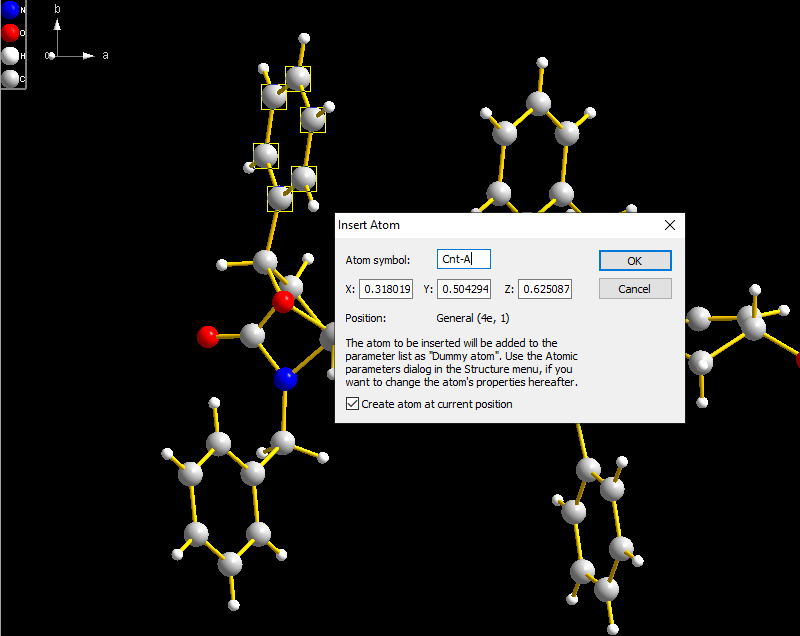Diamond - How To Measure Distances Between Centroids
You can find the sample files here:
cod-7106313.cif
cod-7106313-centroids.diamdoc
Open the file code-7106313-centroids.diamdoc. The picture "Two molecules" shows two molecules connected via the H-bond between O3-H3...O2 (1+x, 1/2-y, 1/2+z).
Select the six C atoms in the top left phenyl ring (C10 through C15 at x, y, z each) and call the command "Insert Atom" from the "Structure" menu, which opens the corresponding dialog window. "Construct Polyhedron" dialog with the corresponding command in the "Build"/"Polyhedra" sub-menu:
The dialog shows the fractional coordinates of the center of the six C-atoms, i.e. the centroid's coordinates x/a, y/b, z/c. We change the default label "Dummy" to "Cnt-A". Ensure that the checkmark at "Create atom at current position" is set.

This will create a dummy atom with the default light gray and a default radius.
Change these properties by clicking on the centroid atoms with the right mouse button and choosing "Edit"/"Atom Design" from the context menu.
In the "Atom Design" dialog, we change the Fill color on the "Style and Colors" page (tab) to "Lavender" and set the "Standard radius" on the "Radius" page (tab) to 0.1 Angstroem. (Note: We need a radius greater than zero, otherwise we cannot click on the centroid atom to measure its distance from another atom.)
We repeat this procedure with the phenyl ring in the bottom left part of the picture (C17 through C22 at x, y, z each), but here we name the dummy atom with "Cnt-B" and change the fill color to "Turquoise".
The measuring of distances works like for regular atoms: Run the command "Measure Distances" from the "Tools" menu and click on the first centroid atom "Cnt-A" first, then on the second centroid atom "Cnt-B". The result is shown as in the screenshot:

Note: You can also show distances from and to dummy/centroid atoms in the distances calculation (View/Distances and Angles command)along with the regular atoms.
|

